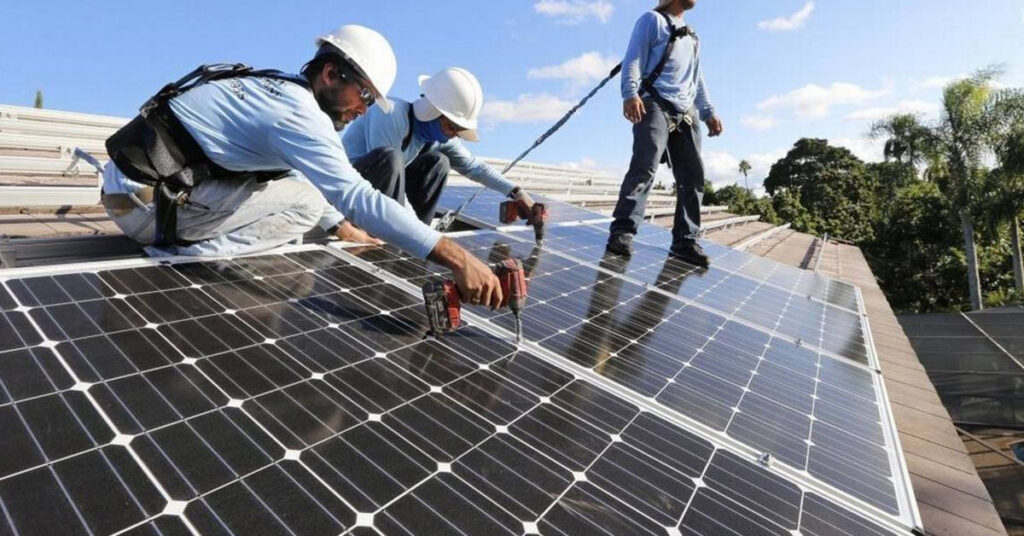As the push for renewable energy continues to grow, more homeowners are considering the benefits of installing solar panels on their roofs. But one of the most common questions is: How many solar panels can I fit on my roof? This comprehensive guide will walk you through everything you need to know, from calculating your roof’s solar potential to understanding the factors that influence the number of panels you can install.
Understanding Your Roof’s Solar Potential
The first step in determining how many solar panels you can fit on your roof is to understand your roof’s solar potential. This involves evaluating several key factors:
1. Roof Size and Shape
The size and shape of your roof are crucial in determining the number of solar panels it can accommodate. Measure the total area of your roof and identify any sections that are unsuitable for solar panels, such as those shaded by trees or other buildings.
2. Roof Orientation and Tilt
The orientation and tilt of your roof significantly affect the efficiency of your solar panels. In the Northern Hemisphere, south-facing roofs are ideal because they receive the most sunlight throughout the day. The angle of your roof also matters; a tilt angle equal to your latitude is generally optimal for capturing solar energy.
3. Roof Material and Condition
The type of roofing material and its condition can influence the installation process. Asphalt shingles, metal, and tile roofs are generally suitable for solar panels, but older roofs may need repairs or replacements before installation.
How Many Solar Panels Can I Fit On My Roof
Once you have a clear understanding of your roof’s potential, you can start calculating the number of solar panels it can accommodate. Here’s a step-by-step process:
1. Measure Usable Roof Area
Calculate the usable area of your roof by subtracting the space taken up by chimneys, vents, and other obstructions from the total roof area. For example, if your roof is 1,000 square feet but 200 square feet are obstructed, your usable area is 800 square feet.
2. Determine Panel Size and Wattage
Solar panels come in various sizes and wattages. Standard residential panels are typically around 65 inches by 39 inches and produce between 250 to 400 watts of power. You’ll need to know the dimensions and wattage of the panels you’re considering.
3. Calculate Panel Area and Capacity
Divide your usable roof area by the area of a single panel to estimate how many panels can fit on your roof. For example, if each panel is 17.5 square feet, and your usable area is 800 square feet, you can fit approximately 45 panels.
To estimate the total power capacity, multiply the number of panels by their wattage. If you’re using 300-watt panels, 45 panels would generate 13,500 watts, or 13.5 kilowatts (kW).
Factors Influencing Solar Panel Installation
Several additional factors can influence how many solar panels you can install and how much energy they will produce:
1. Local Climate and Sunlight Hours
The amount of sunlight your location receives affects the efficiency of your solar panels. Areas with more sunny days will generate more electricity. Check your local solar insolation levels to understand how much energy your panels can produce.
2. Shading and Obstructions
Shading from trees, buildings, or other obstructions can significantly reduce the efficiency of your solar panels. Consider trimming trees or removing other sources of shade to maximize sunlight exposure.
3. System Efficiency and Energy Needs
The efficiency of your solar system and your household’s energy consumption patterns will also play a role. Higher-efficiency panels produce more energy per square foot, allowing you to generate more power with fewer panels. Analyze your energy bills to determine your average energy usage and ensure your solar system can meet your needs.
Optimizing Your Solar Panel Layout
To maximize the number of panels on your roof, consider the following tips:
1. Professional Solar Design Services
Hiring a professional solar design service can help optimize your panel layout. These experts use specialized software to design a system that maximizes your roof’s potential while adhering to local building codes and regulations.
2. Utilizing Different Roof Sections
If your main roof section cannot accommodate all the panels you need, consider using other sections, such as garages or sheds. Ensure these additional areas receive adequate sunlight and are structurally sound for installation.
3. Exploring Panel Mounting Options
Different mounting options, such as ground mounts or solar carports, can provide alternatives if your roof space is limited. These solutions can be particularly useful for properties with ample land but limited roof space.
Read More: How To Get Rid Of Pigeons On Roof
Conclusion
Determining how many solar panels you can fit on your roof involves a careful assessment of various factors, from roof size and orientation to local climate and shading. By accurately measuring your usable roof area and considering the wattage and size of the panels, you can estimate the number of panels your roof can accommodate.
Consulting with a professional solar installer can help ensure you design a system that meets your energy needs and maximizes your roof’s solar potential. With the right approach, you can take full advantage of solar energy and enjoy the benefits of a sustainable, cost-effective power source.


